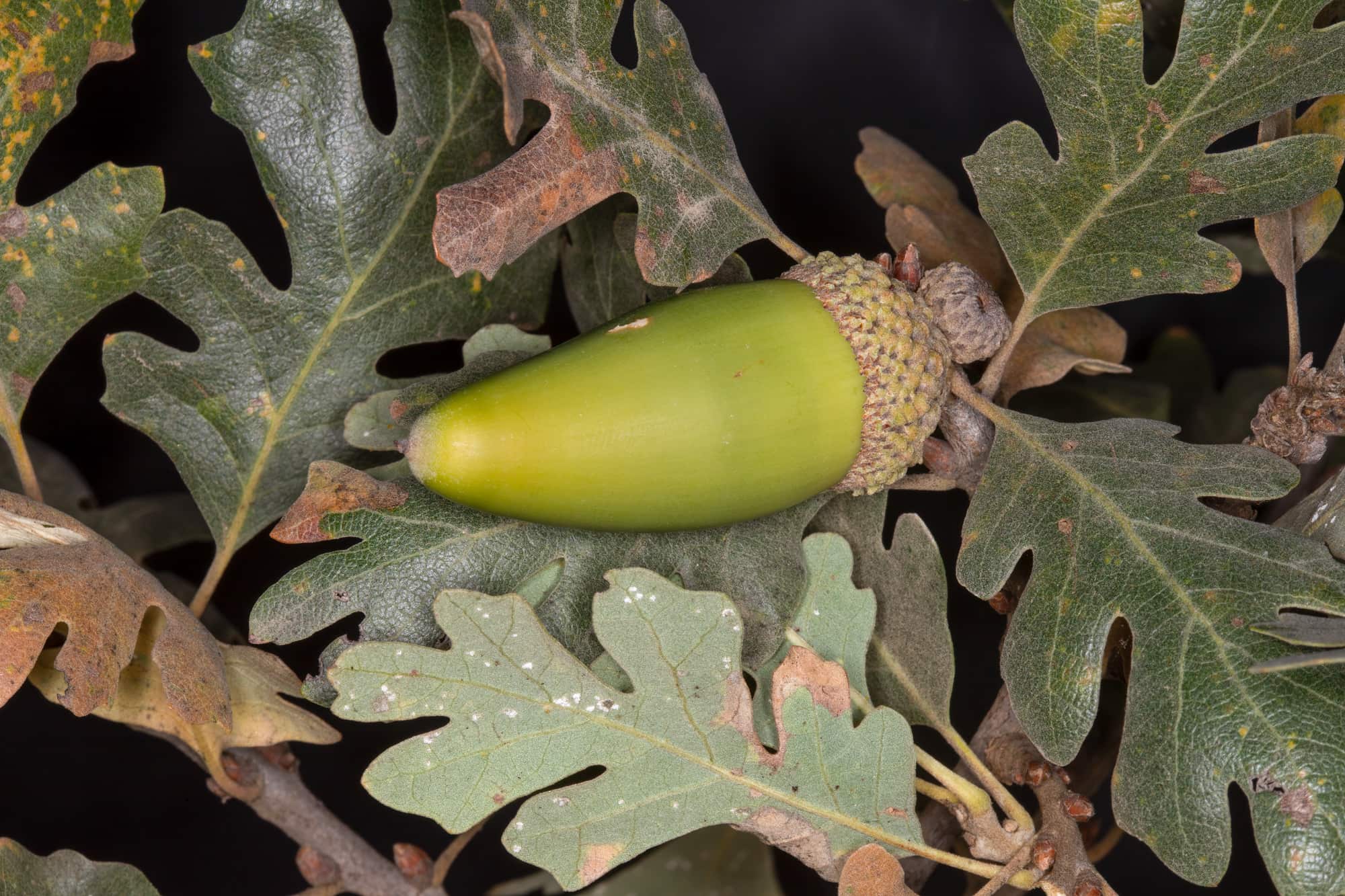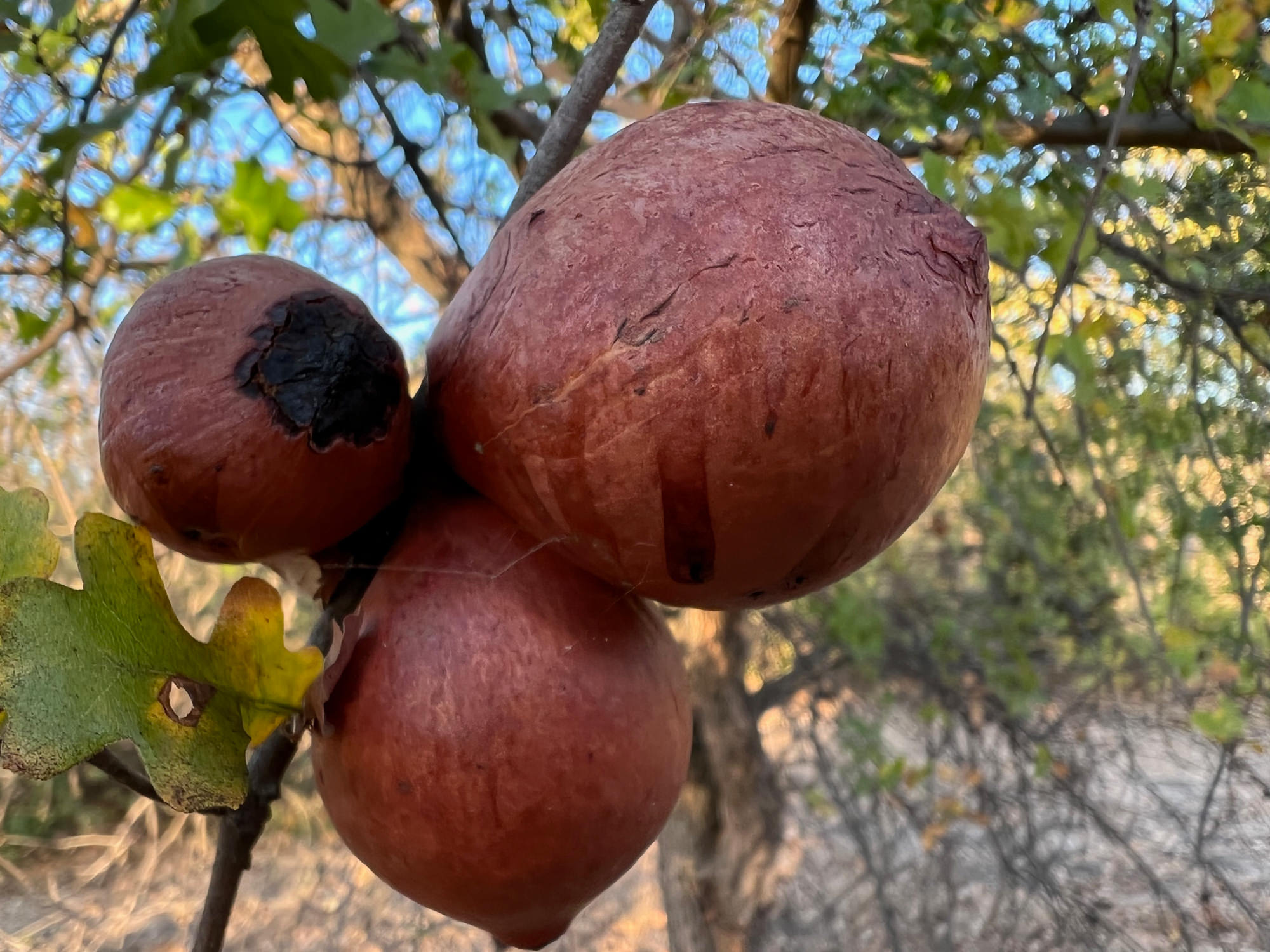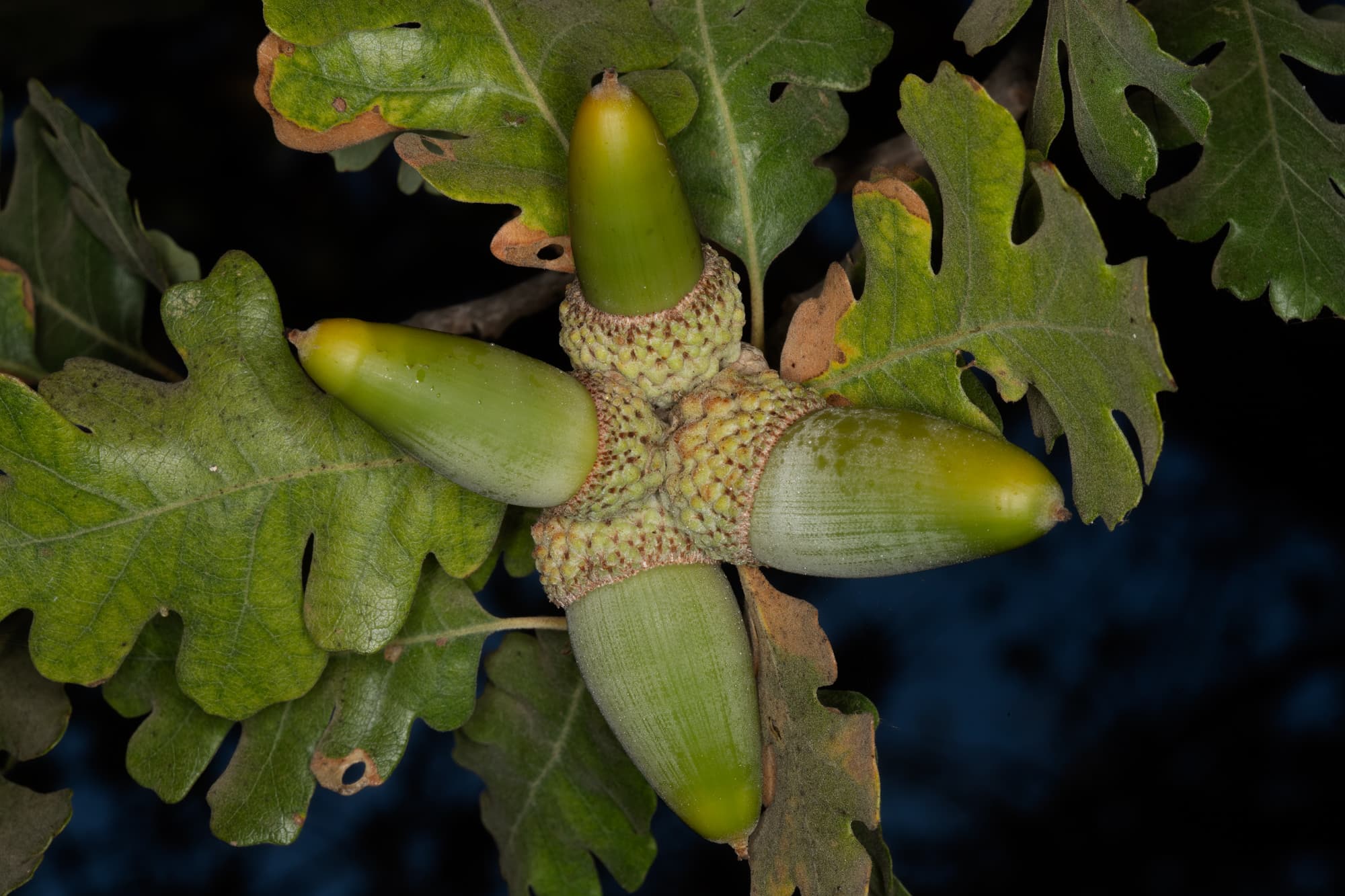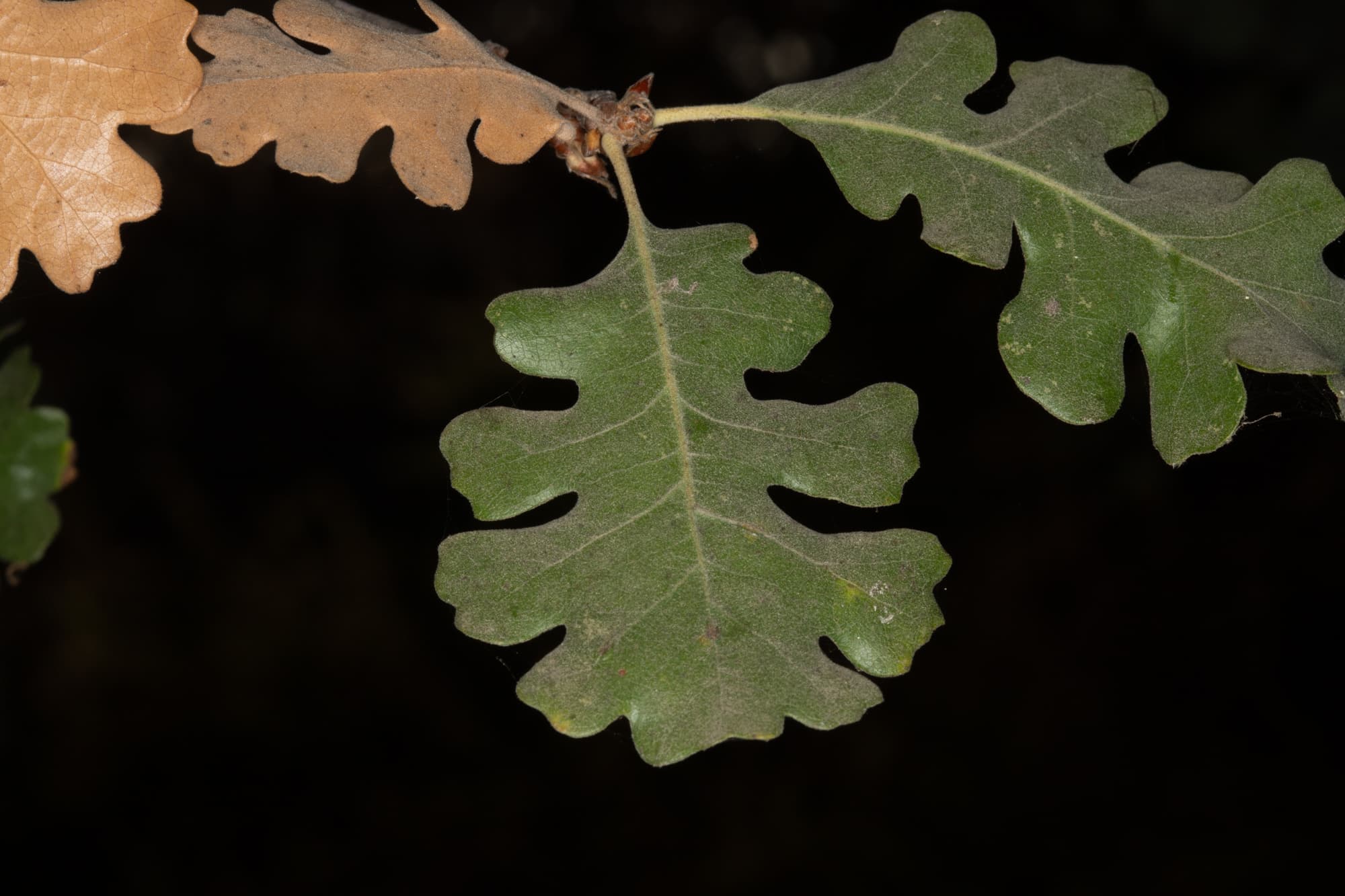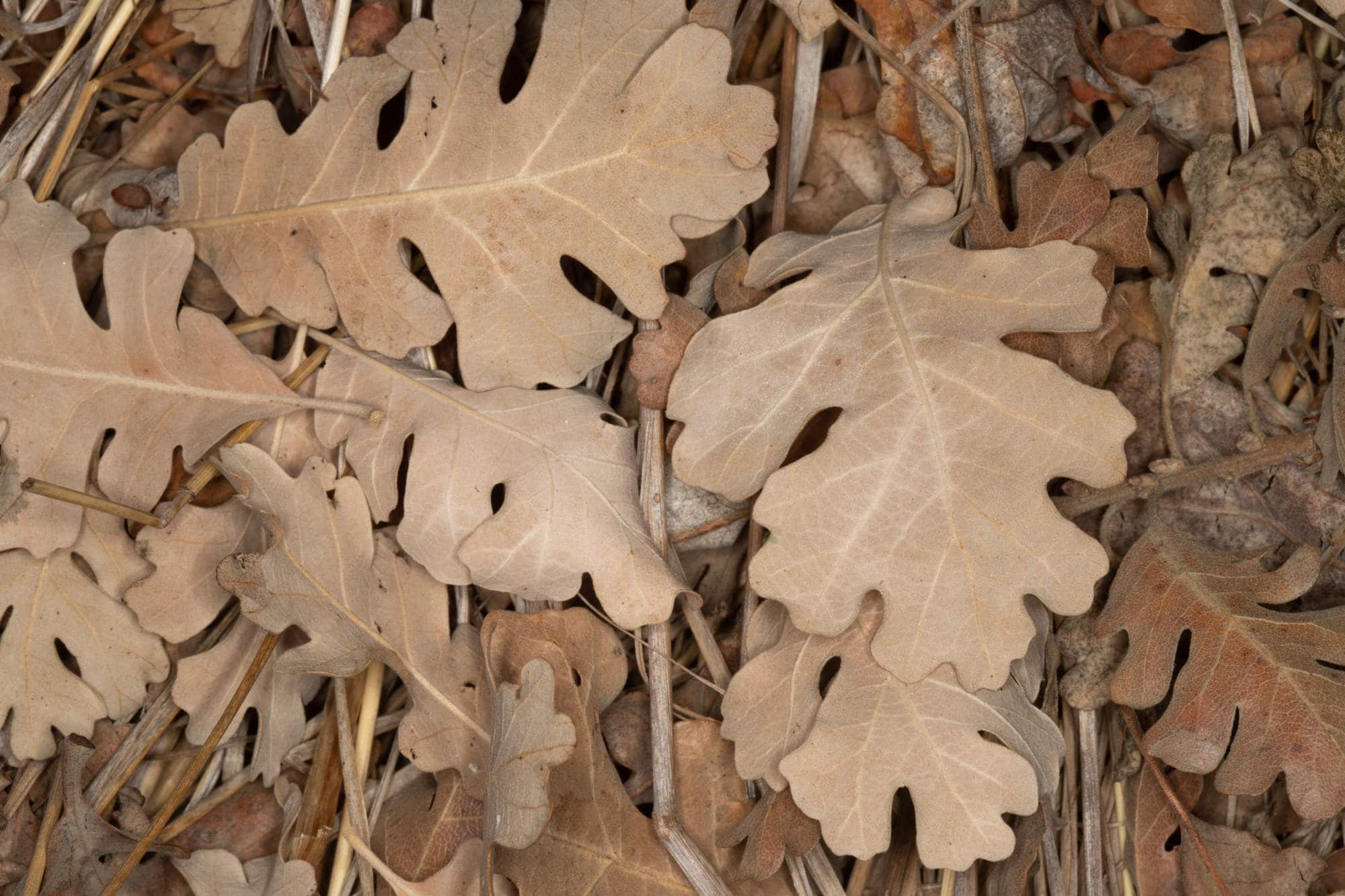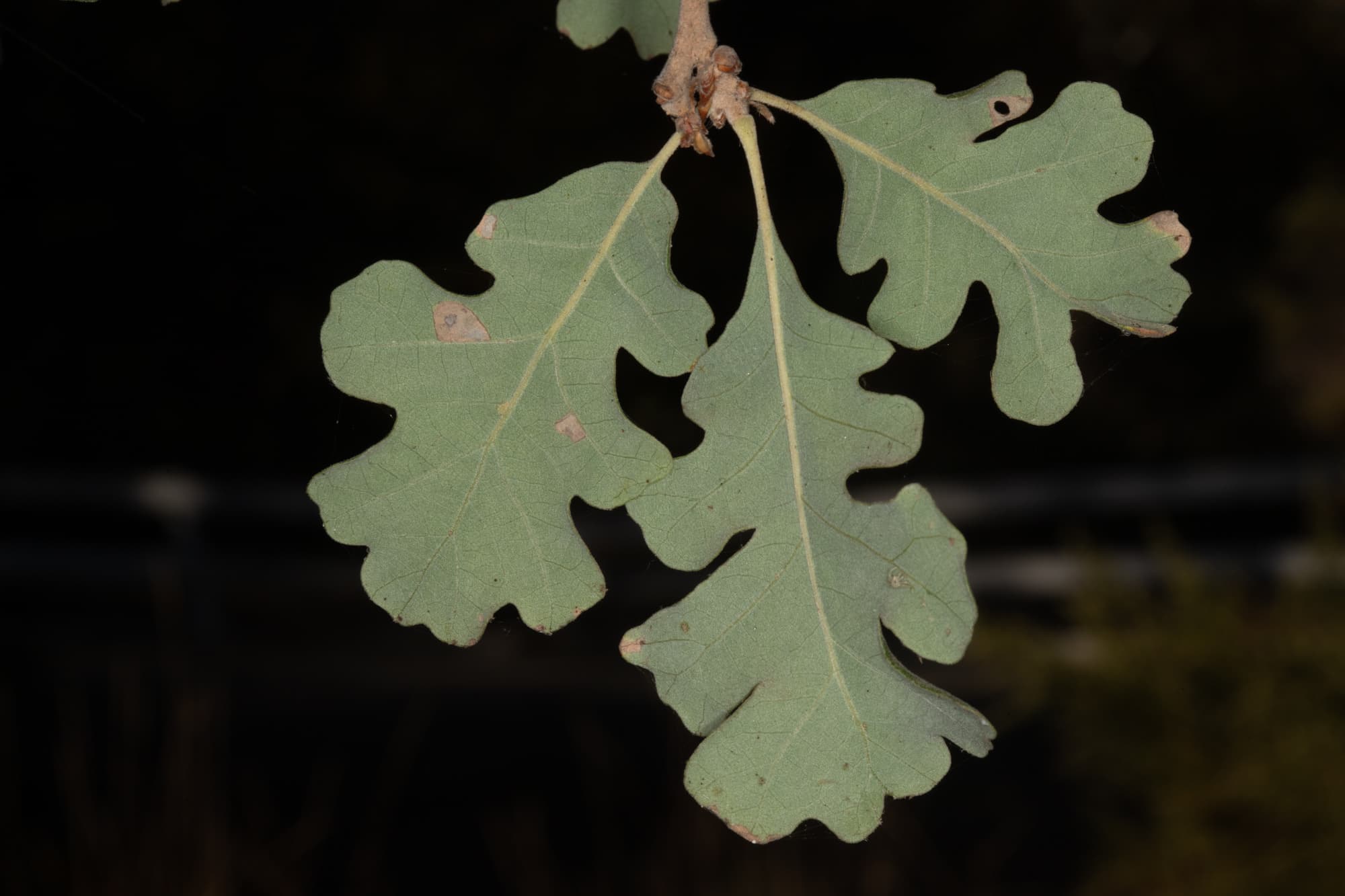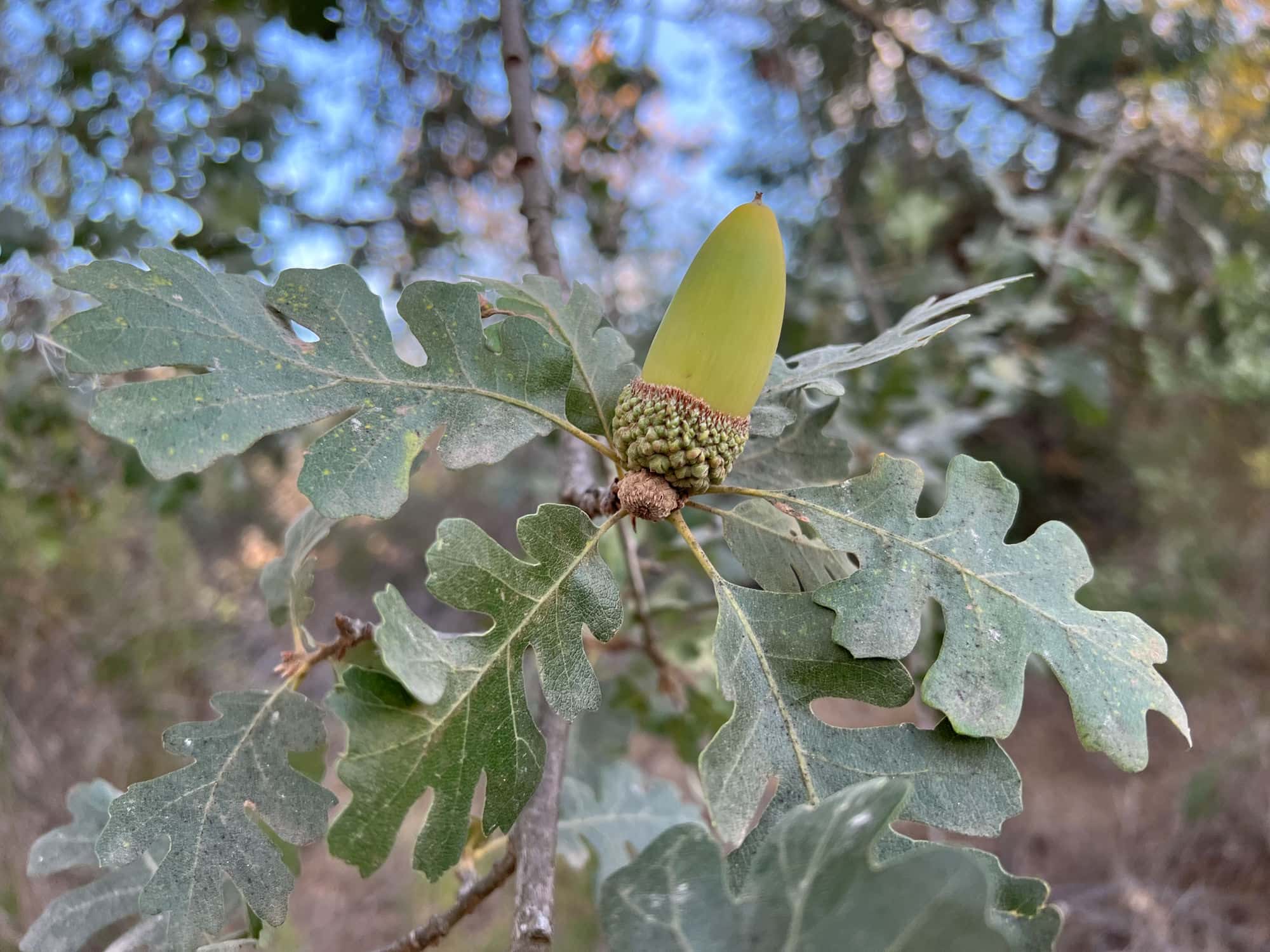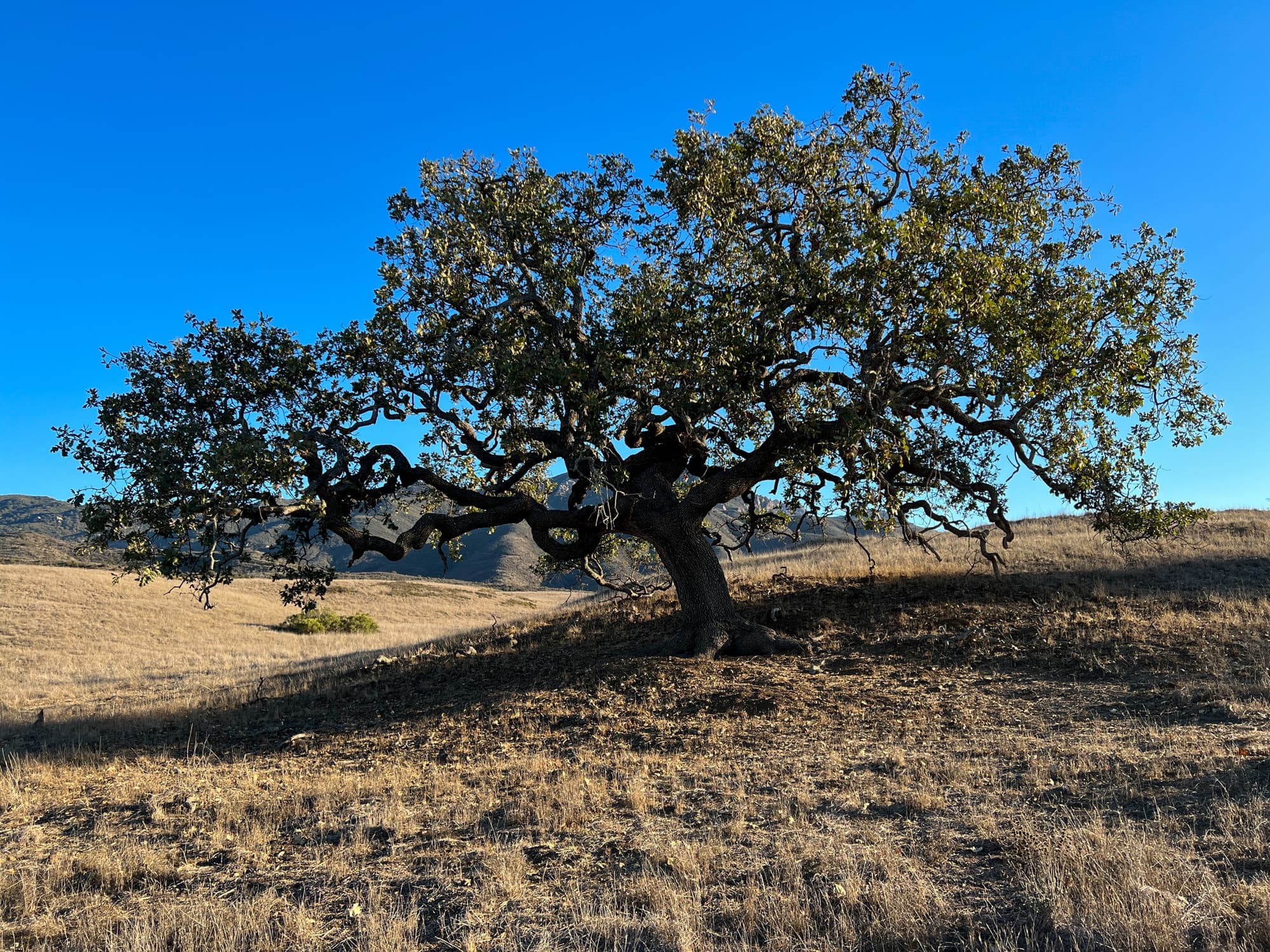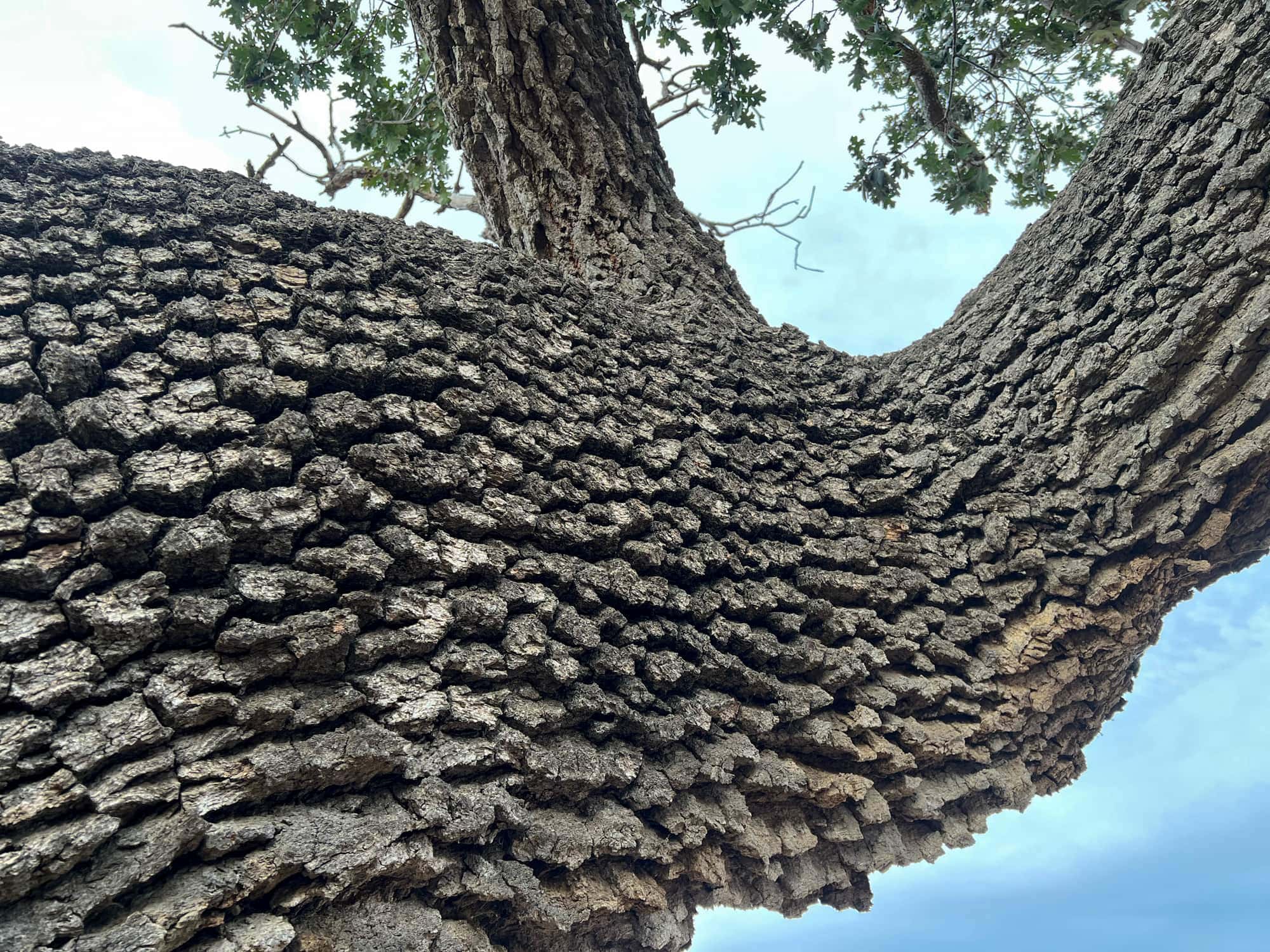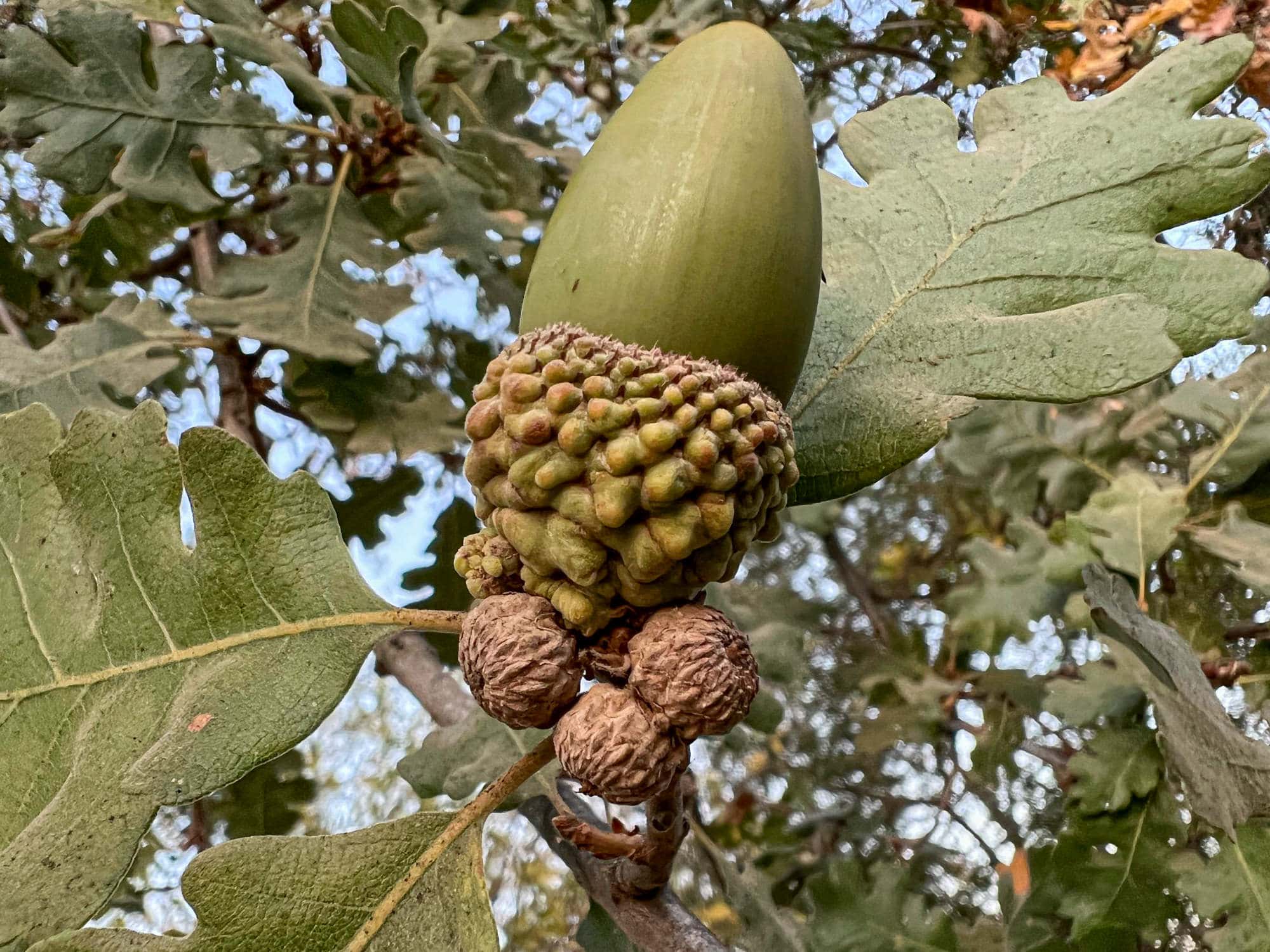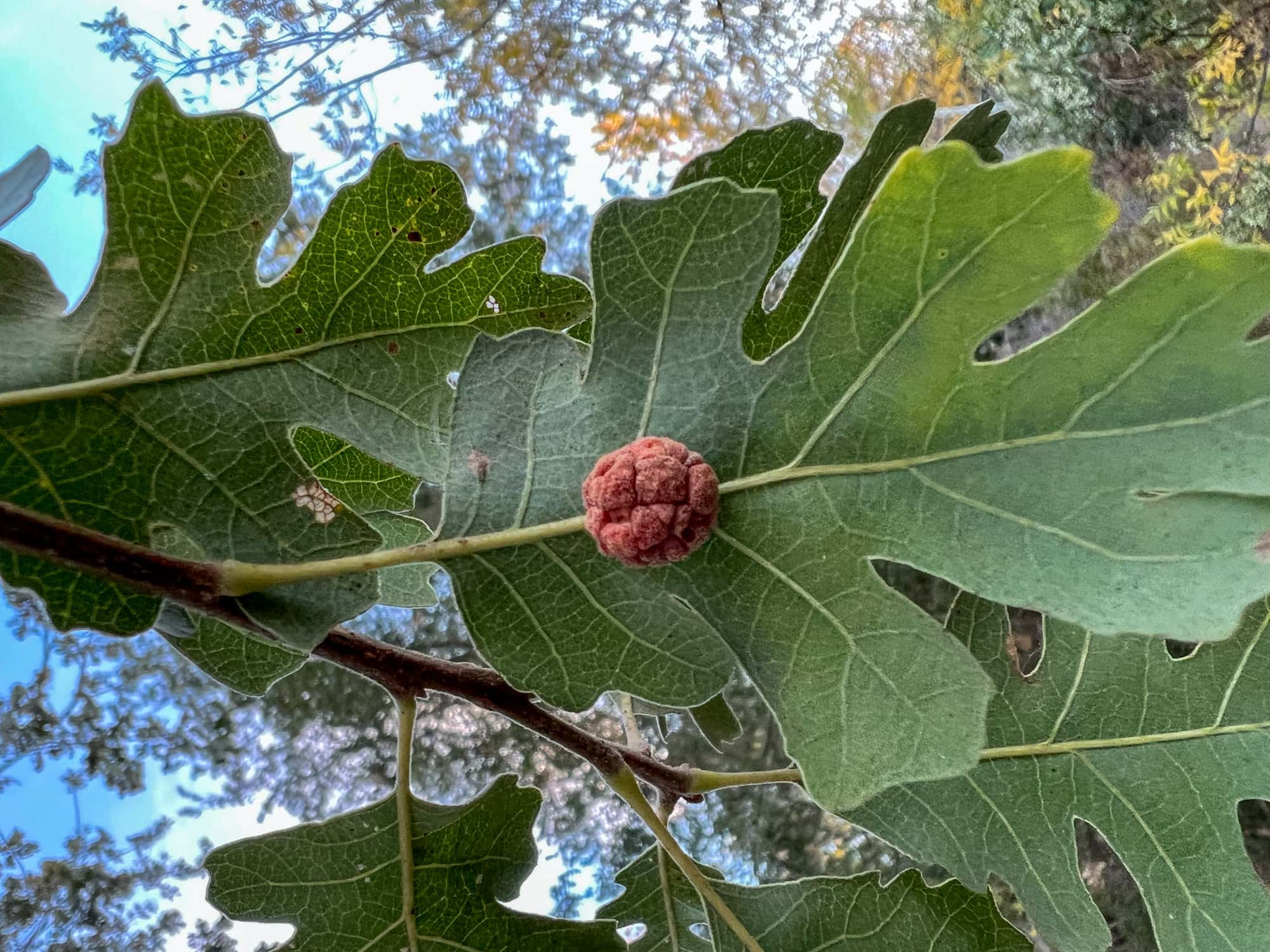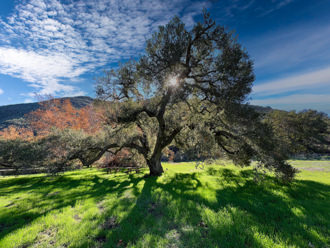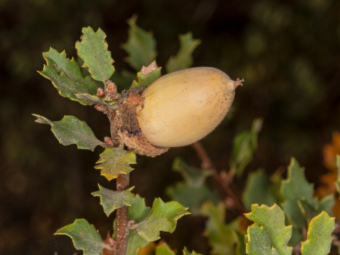Valley Oak
- Quercus lobata
| Common Name(s): | Valley Oak |
| Scientific Name: | Quercus lobata |
| Family: | Fagaceae (Beech) |
| Plant Type: | Tree |
| Size: | 20 to 100 feet high |
| Habitat: | open woodlands, riparian forests, valley savannas |
| Blooms: | March to May |
| Fire Response: | Sprout from Crown and Trunk |
Considering its size, age, and grandeur, the valley oak has been called "the monarch of California oaks" and can reach heights over 100 feet with roots reaching down 75 feet. The massive (up to seven feet in diameter) trunks are built to endure - they can live up to 600 years. The tree gets its species name, Quercus lobata, from its deeply lobed leaves that are shed in the wintertime. This contrasts with the coast live oak, which keeps its more spiny leaves year-round.
Valley oaks are endemic to California, with Los Angeles County marking the southern boundary of its range. They can grow on grassy savannas where the oaks grow large and widely spaced from each other. Unfortunately, a great number of these savannah communities throughout California have been lost to agricultural and urban development and it is believed that only 10% of the tree's original habitat remains. The grassy understory below the oaks has also changed, now being composed mostly of non-native annual grasses that crowd out native species. Valley oaks also form more dense riparian forests alongside Fremont Cottonwoods, and they can also join oak woodland communities along with coast live oak.
Acorns were a major food source for the indigenous peoples of California. Once dried, acorns were pounded into a flour and then prepared for consumption by a process called leaching, which removes the bitter, tannic acids. Once properly leached, the acorn flour was mixed with more water and heated into a soup or mush. One source states that the Chumash preferred acorns from coast live oak over the acorns of valley oak [Jan Timbrook "Chumash Ethnobotany" p159] and another states they were valued and often mixed with acorns of other species [M. Kat Anderson "Tending the Wild" p174]. All parts of the oak tree had a use, from medicine to basketry to toys and even musical instruments. Valley oak acorns are the largest of the California native oaks - nearly two inches in length.
Valley oak communities are an important habitat for wildlife, giving a home for nesting birds and food for birds, insects, animals, and even other plants. Ground squirrels, pocket gophers, scrub jays, acorn woodpeckers, and black-tailed deer eat the acorns. Acorns that are stashed in the ground and forgotten can sprout into a new oak tree.
Link to Calflora.net - the best source of this fascinating information.
Name Origin: Quercus: the classical Latin name for the oak from Roman times, interestingly no certain derivation for the name, possibly from the Celtic quer, "fine," and cuez, "tree." - loba'ta: lobed.
Friday Fun Fact: encino and roble are two Spanish words that describe oaks. Encino refers to the evergreen species (coast live oak) and roble refers to the deciduous species (valley oak).
Contributed by George Sherman
Featured Plants in the Fagaceae (Beech) Family:
Last modified: August 21 2024 15:18:52.
Number of Images: 13
Image Size Total: 5,998,286
References:
Wildflowers of the Santa Monica Mountains, by Milt McAuleyFlowering Plants: The Santa Monica Mountains, Coastal and Chaparral Regions of Southern California, by Nancy Dale
Chumash Ethnobotany: Plant Knowledge Among the Chumash People, by Jan Timbrook
Leaf Shapes Primer - Botanical Terms for Leaves: - Link

